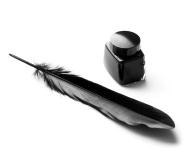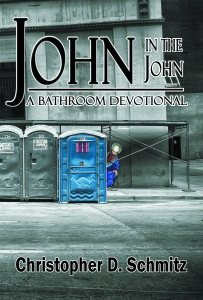
The future is now… except for some of the older crowd. Many people, even in the older/less technologically proficient crowd enjoy the ease and access of credit cards. Every day we become more and more of a cashless society. If you are at a book festival, signing, or author talk and don’t have the opportunity to process credit card transactions, you are limiting the number of books you can sell.
In the past, taking credit cards meant having merchant accounts, paying large fees, processing minimums, bulky equipment, and a lot of tracking and hassle that made it much too inconvenient for authors to deal with. Nowadays it’s simple. Even large segments of the “technophobic” crowd are passingly familiar with how to use online banking and run an iPad or android tablet. Luckily, that’s all that is required.
As a general rule of thumb, Paypal has proven that it lags behind Square and other physical methods of taking payments. It is still the standard for online purchases made person to person and for eBay transactions. Paypal is owned by eBay (or at least a member of the same circle of companies) and as such it’s important to remember that it operates as a financial institution but it is not one—that means it is not FDIC Insured, etc. They do take credit cards, but cards must be linked to accounts, etc. which can mean extra steps that make it highly inconvenient for casual shoppers who just want a quick and easy transaction (that ease and convenience is what attracts people in the first place.)
Square is a different animal altogether. It was created by its designers who couldn’t complete a transaction because the seller could not accept a credit card. With this in mind, it became a convenient way for people at swap meets, yard sales, etc. to accept credit cards. As a musician who played in a band that wanted to sell t-shirts at a merchandise booth it became an effective way to sell products to an increasingly cashless demographic.
Why you should accept credit cards:
Numbers vary, but I’ve heard it said that sales increase 20-25% or more when a seller accepts plastic; that number certainly helps pay for those transaction fees, most of which cost you mere pennies, and then some.
In addition to the financial motivation, there are other reasons. It legitimizes you as a business in the eyes of consumers. It levels the playing field with other vendors. It encourages impulse buying (what you want). It eliminates the risk of bad checks.
How Square works:
Other services are pretty similar, but I’ll discuss Square since I am familiar with it. More detailed info can be found at https://squareup.com.
Signup for a square account and link it to whatever existing bank account you want to receive payments from. Enter your address to get the card reader hardware mailed and download the software app to either your apple tablet or phone or your android tablet or phone. For simplicity, it’s best if you have run the app from a device that has a data service plan and location settings are turned on (as if you wanted to use a gps program). Using the app, sign in to the account you created with Square and you can take payments immediately!
There is a slightly higher fee to type in the card account number/info (when/if you can’t use the swiping device that plugs into your headphone jack) but it’s a hand feature in case you lose or forget it, or the card refuses to read when swiping. The app also has a bunch of neat features. I have all of my books’ prices saved so that I can easily tap each title to ring up the item; I also have my local sales tax rate saved in the settings to automatically add onto the total. If you don’t use these features you can always do the math and type in the amount you are charging and charge whatever amount is necessary. If you run all of your transactions through the software (including cash sales) it gives you a nice log to show sales amounts and numbers (with or without tax) which is nice if a vending event/location charges a percentage against your sales.
Other Alternatives:
I can’t speak to ease of use or reliability of these others, but Square is not alone in the services they provide. Here are a number of other companies that provide a similar service. Alternatively, many mobile phone companies also have their own service as well.
Clover Go
iZettle (for non United States users)
Paypal Here
Inner Fence
Spark Pay
Intuit GoPayment
Vend
Lightspeed
CardFellow
ChargePass
QuickBooks Payments
…and more.





 I don’t read lots of nonfiction, but I’ve been in a learning mood lately. Blockbuster Branding by Faith Faith has a few points to offer retailers and authors. Particularly in the aspect of naming your product, service, or book. While the book delves into a diet-version of the psychology it seems to spend a great amount of time trying to convince me to buy other products or services for brand marketing.
I don’t read lots of nonfiction, but I’ve been in a learning mood lately. Blockbuster Branding by Faith Faith has a few points to offer retailers and authors. Particularly in the aspect of naming your product, service, or book. While the book delves into a diet-version of the psychology it seems to spend a great amount of time trying to convince me to buy other products or services for brand marketing.

 I’ve always been a little skeptical of anthologies. I did a convention this week and my table mate sold out of his anthology while I nearly sold out of mine. With the quality of production and content on the rise, it’s easy to see how anthologies like Ride the Star Wind are changing opinions.
I’ve always been a little skeptical of anthologies. I did a convention this week and my table mate sold out of his anthology while I nearly sold out of mine. With the quality of production and content on the rise, it’s easy to see how anthologies like Ride the Star Wind are changing opinions.